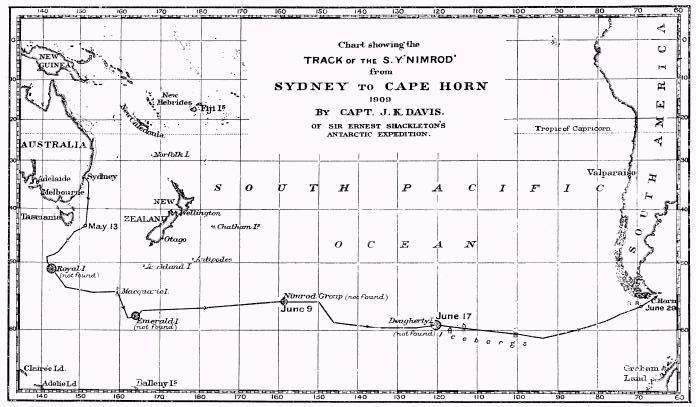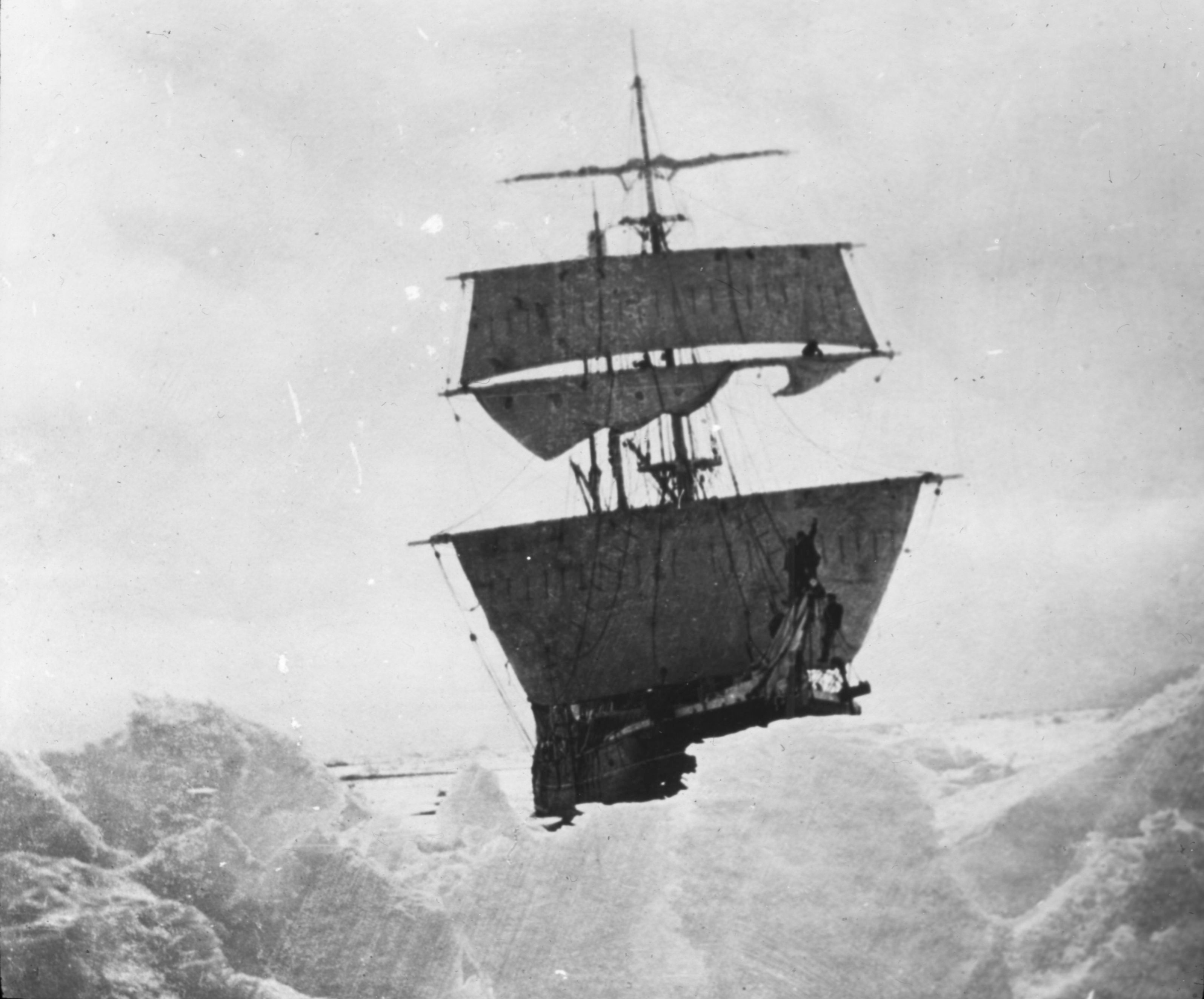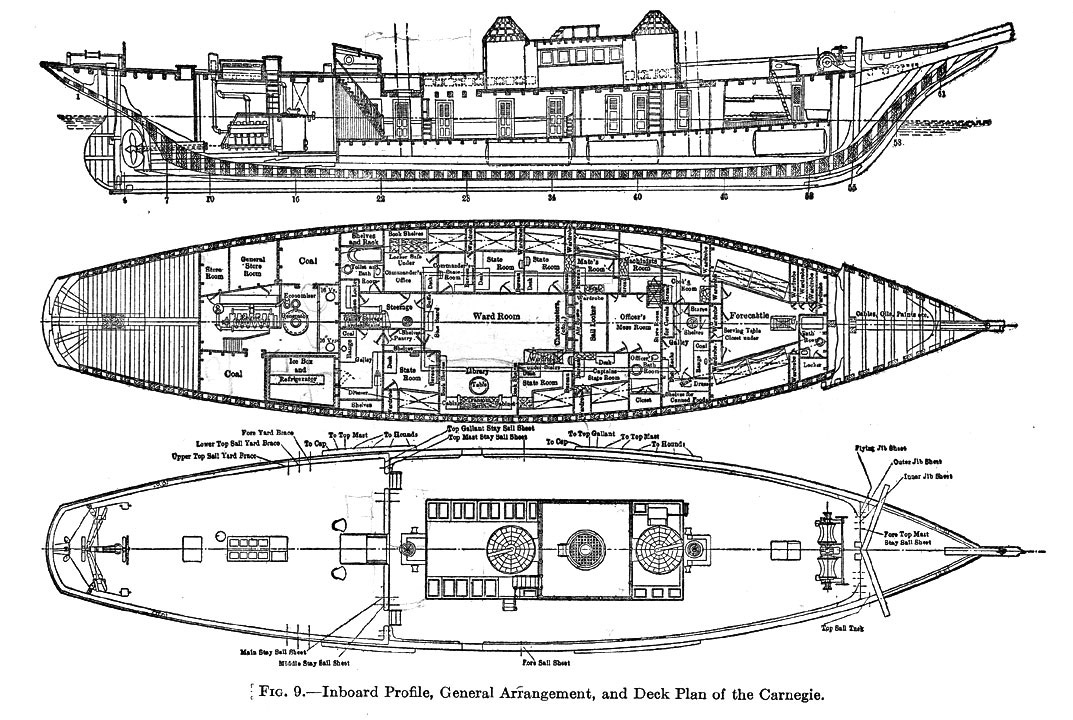|
Nimrod Islands
The Nimrod Islands were a group of islands first reported in 1828 by Captain Eilbeck of the ship ''Nimrod'' while sailing from Port Jackson around Cape Horn. Their reported location was east of Emerald Island and west of Dougherty Island, at approximately . They are now considered phantom islands. The explorer John Biscoe in the brig ''Tula'' searched for the Nimrod Group without success in 1831 during the Southern Ocean Expedition. John King Davis, sailing aboard a different ''Nimrod'', searched the location in June 1909 following Shackleton's famous Nimrod Expedition to Antarctica, and the Norwegian vessel ''Norvegia'' outfitted by Lars Christensen searched again in 1930; both expeditions reported empty seas. Captain J.P. Ault of the magnetic survey vessel '' Carnegie'' attempted to approach the location in December 1915 but was deterred by weather. See also * 1906 German map showing Nimrod Group * Royal Company's Islands * Emerald Island (phantom) * Dougherty Island Dough ... [...More Info...] [...Related Items...] OR: [Wikipedia] [Google] [Baidu] |
Nimrod
Nimrod (; ; arc, ܢܡܪܘܕ; ar, نُمْرُود, Numrūd) is a biblical figure mentioned in the Book of Genesis and Books of Chronicles. The son of Cush and therefore a great-grandson of Noah, Nimrod was described as a king in the land of Shinar (Mesopotamia). The Bible states that he was "a mighty hunter before the Lord nd... began to be mighty in the earth". Later extra-biblical traditions identified Nimrod as the ruler who commissioned the construction of the Tower of Babel, which led to his reputation as a king who was rebellious against God. Nimrod has not been attested in any historic, non-biblical registers, records or king lists, including those of Mesopotamia itself. Historians have failed to match Nimrod with any historically attested figure. Several ruins of the Middle East have been named after him. Biblical account The first biblical mention of Nimrod is in the Table of Nations. He is described as the son of Cush, grandson of Ham, son of Noah, Ham, and g ... [...More Info...] [...Related Items...] OR: [Wikipedia] [Google] [Baidu] |
Nimrod (ship)
''Nimrod'' was a wooden-hulled, three-masted sailing ship with auxiliary steam engine that was built in Scotland in 1867 as a whaler. She was the ship with which Ernest Shackleton made his ''Nimrod'' Expedition to Antarctica in 1908–09. After the expedition she returned to commercial service, and in 1919 she was wrecked in the North Sea with the loss of ten members of her crew. Building and registration Alexander Stephen and Sons built ''Nimrod'' in Dundee. Her launch date is not recorded, but she was completed in January 1867. Her registered length was , her beam was and her depth was . Her tonnages were and . She was rigged as a schooner. She had a single screw, driven by a 50 hp steam engine built by Gourlay Brothers of Dundee. Her principal owner was Thomas B Job, who registered her at Liverpool. Her United Kingdom official number was 55047. They used her for whaling and seal hunting. By 1874 ''Nimrod'' was rigged as a barquentine. By 1888 her owners were listed as J ... [...More Info...] [...Related Items...] OR: [Wikipedia] [Google] [Baidu] |
Carnegie (yacht)
''Carnegie'' was a brigantine yacht, equipped as a research vessel, constructed almost entirely from wood and other non-magnetic materials to allow sensitive magnetic measurements to be taken for the Carnegie Institution's Department of Terrestrial Magnetism. She carried out a series of cruises from her launch in 1909 to her destruction by an onboard explosion while in port in 1929. She covered almost in her twenty years at sea. The Carnegie Rupes on the planet Mercury are named after this research vessel. Construction Louis Agricola Bauer, the first director of the Department of Terrestrial Magnetism at the Carnegie Institution, wanted to focus on acquiring oceanic magnetic data to improve the understanding of the Earth's magnetic field. After an experiment in which the brigantine ''Galilee'' was adapted by removing as much magnetic material as possible, it became clear that a new entirely non-magnetic ship was needed. After convincing the institution's board, Bauer set about g ... [...More Info...] [...Related Items...] OR: [Wikipedia] [Google] [Baidu] |
Lars Christensen
Lars Christensen (6 April 1884 – 10 December 1965) was a Norwegian shipowner and whaling magnate. He was also a philanthropist with a keen interest in the exploration of Antarctica. Career Lars Christensen was born at Sandar in Vestfold, Norway. Born into a wealthy family, Christensen inherited his whaling fleet from his father, Christen Christensen. After completing middle school in 1899, he received training in Germany and at Newcastle followed by trade college in Kristiania (now Oslo). He started his career as a ship owner in 1906. He ventured into the whaling industry in 1909, and directed several companies, including Framnæs Mekaniske Værksted, AS Thor Dahl, AS Odd, AS Ørnen, AS Thorsholm and Bryde og Dahls Hvalfangstselskap. Christensen was Danish consul in Sandefjord from 1909. In 1910 Lars Christensen had married Ingrid Dahl (1891–1976), daughter of wholesale merchant and ship owner Thor Dahl (1862–1920). He would later assume control of large part of his fa ... [...More Info...] [...Related Items...] OR: [Wikipedia] [Google] [Baidu] |
Norway
Norway, officially the Kingdom of Norway, is a Nordic country in Northern Europe, the mainland territory of which comprises the western and northernmost portion of the Scandinavian Peninsula. The remote Arctic island of Jan Mayen and the archipelago of Svalbard also form part of Norway. Bouvet Island, located in the Subantarctic, is a dependency of Norway; it also lays claims to the Antarctic territories of Peter I Island and Queen Maud Land. The capital and largest city in Norway is Oslo. Norway has a total area of and had a population of 5,425,270 in January 2022. The country shares a long eastern border with Sweden at a length of . It is bordered by Finland and Russia to the northeast and the Skagerrak strait to the south, on the other side of which are Denmark and the United Kingdom. Norway has an extensive coastline, facing the North Atlantic Ocean and the Barents Sea. The maritime influence dominates Norway's climate, with mild lowland temperatures on the se ... [...More Info...] [...Related Items...] OR: [Wikipedia] [Google] [Baidu] |
Antarctica
Antarctica () is Earth's southernmost and least-populated continent. Situated almost entirely south of the Antarctic Circle and surrounded by the Southern Ocean, it contains the geographic South Pole. Antarctica is the fifth-largest continent, being about 40% larger than Europe, and has an area of . Most of Antarctica is covered by the Antarctic ice sheet, with an average thickness of . Antarctica is, on average, the coldest, driest, and windiest of the continents, and it has the highest average elevation. It is mainly a polar desert, with annual precipitation of over along the coast and far less inland. About 70% of the world's freshwater reserves are frozen in Antarctica, which, if melted, would raise global sea levels by almost . Antarctica holds the record for the lowest measured temperature on Earth, . The coastal regions can reach temperatures over in summer. Native species of animals include mites, nematodes, penguins, seals and tardigrades. Where vegetation o ... [...More Info...] [...Related Items...] OR: [Wikipedia] [Google] [Baidu] |
Nimrod Expedition
The ''Nimrod'' Expedition of 1907–1909, otherwise known as the British Antarctic Expedition, was the first of three successful expeditions to the Antarctic led by Ernest Shackleton and his second expedition to the Antarctic. Its main target, among a range of geographical and scientific objectives, was to be first to the South Pole. This was not attained, but the expedition's southern march reached a Farthest South latitude of 88° 23' S, just from the pole. This was by far the longest southern polar journey to that date and a record convergence on either Pole. A separate group led by Welsh Australian geology professor Edgeworth David reached the estimated location of the South Magnetic Pole, and the expedition also achieved the first ascent of Mount Erebus, Antarctica's second highest volcano. The expedition lacked governmental or institutional support, and relied on private loans and individual contributions. It was beset by financial problems and its preparations ... [...More Info...] [...Related Items...] OR: [Wikipedia] [Google] [Baidu] |
Ernest Shackleton
Sir Ernest Henry Shackleton (15 February 1874 – 5 January 1922) was an Anglo-Irish Antarctic explorer who led three British expeditions to the Antarctic. He was one of the principal figures of the period known as the Heroic Age of Antarctic Exploration. Born in Kilkea, County Kildare, Ireland, Shackleton and his Anglo-Irish family moved to Sydenham in suburban south London when he was ten. Shackleton's first experience of the polar regions was as third officer on Captain Robert Falcon Scott's ''Discovery'' expedition of 1901–1904, from which he was sent home early on health grounds, after he and his companions Scott and Edward Adrian Wilson set a new southern record by marching to latitude 82°S. During the ''Nimrod'' expedition of 1907–1909, he and three companions established a new record Farthest South latitude at 88°S, only 97 geographical miles (112 statute miles or 180 kilometres) from the South Pole, the largest advance to the pole in ... [...More Info...] [...Related Items...] OR: [Wikipedia] [Google] [Baidu] |
John King Davis
John King Davis (19 February 1884 – 8 May 1967) was an English-born Australian explorer and navigator notable for his work captaining exploration ships in Antarctic waters as well as for establishing meteorological stations on Macquarie Island in the subantarctic and on Willis Island in the Coral Sea. Early life Davis's formal education, at Colet Court, London, and at Burford Grammar School, Oxfordshire, ended in 1900, when he and his father left London for Cape Town, South Africa. Career Early exploration work Davis served as chief officer of the during Ernest Shackleton's Antarctic expedition in 1908–1909. He was captain of the and second in command of Douglas Mawson's Australasian Antarctic expedition in 1911–1914. First World War At the outbreak of World War I in August 1914, Davis volunteered for active service, and was put in charge of the troop transport , carrying troops and horses to Egypt and England. Later exploration work He also served as Cap ... [...More Info...] [...Related Items...] OR: [Wikipedia] [Google] [Baidu] |
Antarctica 1912 Edit
Antarctica () is Earth's southernmost and least-populated continent. Situated almost entirely south of the Antarctic Circle and surrounded by the Southern Ocean, it contains the geographic South Pole. Antarctica is the fifth-largest continent, being about 40% larger than Europe, and has an area of . Most of Antarctica is covered by the Antarctic ice sheet, with an average thickness of . Antarctica is, on average, the coldest, driest, and windiest of the continents, and it has the highest average elevation. It is mainly a polar desert, with annual precipitation of over along the coast and far less inland. About 70% of the world's freshwater reserves are frozen in Antarctica, which, if melted, would raise global sea levels by almost . Antarctica holds the record for the lowest measured temperature on Earth, . The coastal regions can reach temperatures over in summer. Native species of animals include mites, nematodes, penguins, seals and tardigrades. Where vegetation ... [...More Info...] [...Related Items...] OR: [Wikipedia] [Google] [Baidu] |
Southern Ocean Expedition
The Southern Ocean Expedition (1830–1833) was an expedition to Antarctica. Background In 1830, the English whaling company Samuel Enderby & Sons appointed John Biscoe master of the brig ''Tula'' and leader of an expedition to find new seal-hunting grounds in the Southern Ocean. Accompanied by the cutter ''Lively'', the ''Tula'' left London and by December had reached the South Shetland Islands. The expedition then sailed further south, crossing the Antarctic Circle on 22 January 1831, before turning east at 60°S. Just over a month later, on 24 February 1831, the expedition sighted bare mountain tops through the ocean ice. Biscoe correctly surmised that they were part of a continent and named the area Enderby Land in honour of his patrons. On 28 February a headland was spotted, which Biscoe named Cape Ann; the mountain atop the headland would later be named Mount Biscoe. Biscoe kept the expedition in the area while he began to chart the coastline, but after a month his and his ... [...More Info...] [...Related Items...] OR: [Wikipedia] [Google] [Baidu] |

.jpg)






